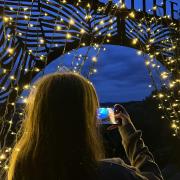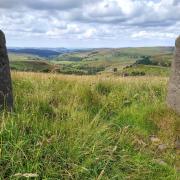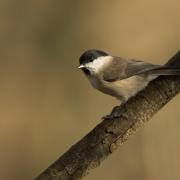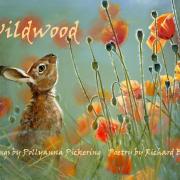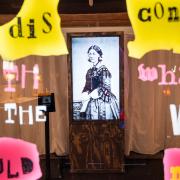In my youth, one issue which always created a conversation was phenology, though the vast majority of people engaging in the chat had no idea what the term meant.
The stimulus for all the brief discussions was 'the first', and people usually heard about it on the news.
Today, perhaps because our world is far more complicated, 'the first' is sadly absent from the papers and TV.
The two 'firsts' that caused the biggest buzz were the appearance of spring's first butterfly and the arrival of the first cuckoo.
After that there was a long list - the first returning swallow, the first egg laid (usually a wood pigeon), the first primrose, the first winter thrush and so on.
This is phenology - the study of the timings of cyclical and seasonal events in wildlife.
Phenological information is still out there, but for the vast majority of people it is hidden within the deluge of information that we have to wade through to find anything.
The web bristles with a multitude of wildlife sites and blogs, and it highlight the firsts, but you have to know which sites to look at.
Unfortunately, this means that some of us are aware of what is happening, but all those chats in the past about the arrival of the first cuckoo no longer take place, which is rather sad.
One of the firsts which I have always looked for, especially because it is often so random, is spring's first butterfly.
In reality, this is post New Year's first butterfly, because it can often be recorded in January or February.
If, by March, I haven't spotted a flying butterfly, I consider the winter to have been a harsh one. This may seem counter intuitive, a summer insect flying in the depths of winter, but what it really reflects is the way that different butterflies survive the colder months.
Many British species do this as either an egg, a small caterpillar or a pupa. But, if a warm spell occurs in late winter, they can't develop into a butterfly quick enough.

However, there is a small band of four who over-winter as adults – small tortoiseshell, comma, peacock and brimstone.
Any one of these can wake up on a hot, sunny day and take flight and the earliest is normally the small tortoiseshell. This is because many of these orange and black beauties hibernate in garden sheds and buildings which warm up quickly on sunny days.
Once warm, the butterflies take to the air but, as the day cools, they will return and hibernate again. Peacocks act similarly and can be spotted in the depths of winter.
Commas and brimstones tend to hibernate amongst vegetation and don't seem to respond to random hot days.
They wake up slowly as the spring weather gets warmer and, if it's an early spring, they can often be spotted on the wing in March.

There is nothing more uplifting than to watch a golden, lemon male brimstone drifting along a bare woodland edge, which is starting to display the first glimmer of the coming spring.
By the end of March, all of the band of four should have had at least a few days gracing the air.
In exceptionally mild winters they can be joined by red admirals, who also will have attempted to hibernate as an adult.
Usually, however, they are killed off by the first frosts but, as climate change is now a stark reality and our seasons are dramatically changing, some of these stunning butterflies occasionally make it through the colder months.
All of the emerging adult butterflies which hibernate tend to look a tadge dowdy, with the exception of the brimstone.
This is not surprising. They emerged from their pupa many months ago and have had romances, battles and have been exposed to the autumn sun, before their long sleep.
Later in the summer, when the new summer brood emerges, the colours are amazing. There is very little in the British natural world that can hold a candle to a freshly emerged adult small tortoiseshell, red admiral or peacock. Even summer's brown comma radiates a bloom which is subtle, but delightful.

After the band of four, the next 'firsts' are butterflies which have wintered as pupae.
The last few days of April and May are sure to reveal orange tips. The male is aptly named and obvious as he bobs past in woody areas. The female orange tip lacks the orange dabs on the end of her wings, and many people confuse her with another of spring's butterflies, the green-veined white.


A closer look, however, will reveal a marbled, greenish pattern to the underwing of the female orange tip. The green-veined white's underwing is dusty lemon green.
All these butterflies are likely to turn up in our gardens, but to see the next 'first' you will have to commit to a moorland ramble.
The green hairstreak is a small April butterfly which delights in flying rapidly low over bilberry patches on south-facing, moorland slopes. These are gorgeous little gems, but they are very difficult to watch.

When they whizz past they look brownish and are difficult to distinguish from the heather and bilberry. If you can follow one, keep your eyes fixed until it lands. It will now seem to disappear, but it will be there, its metallic green underwing blending into the bilberry.
The best way to search for it, once it has settled, is to use binoculars, and scan carefully where you think it is.
Butterfly 'firsts' create delight and it is such a pity that the general news seems to have lost interest in our wildlife.
However, for more information, the Butterfly Conservation's website is superb and it has local groups. Ours is the East Midlands group, which posts a monthly newsletter, a cornucopia of fantastic information.




